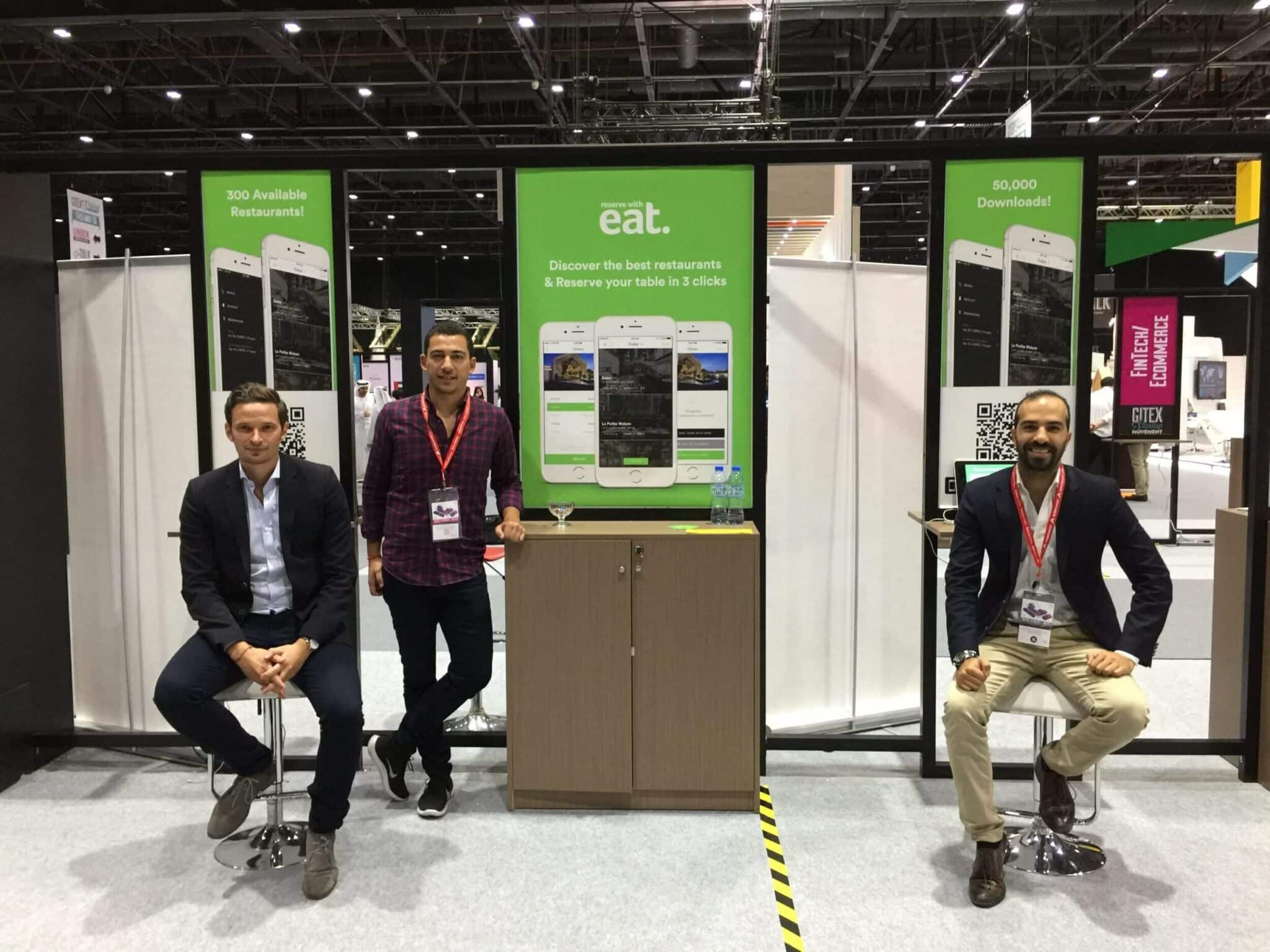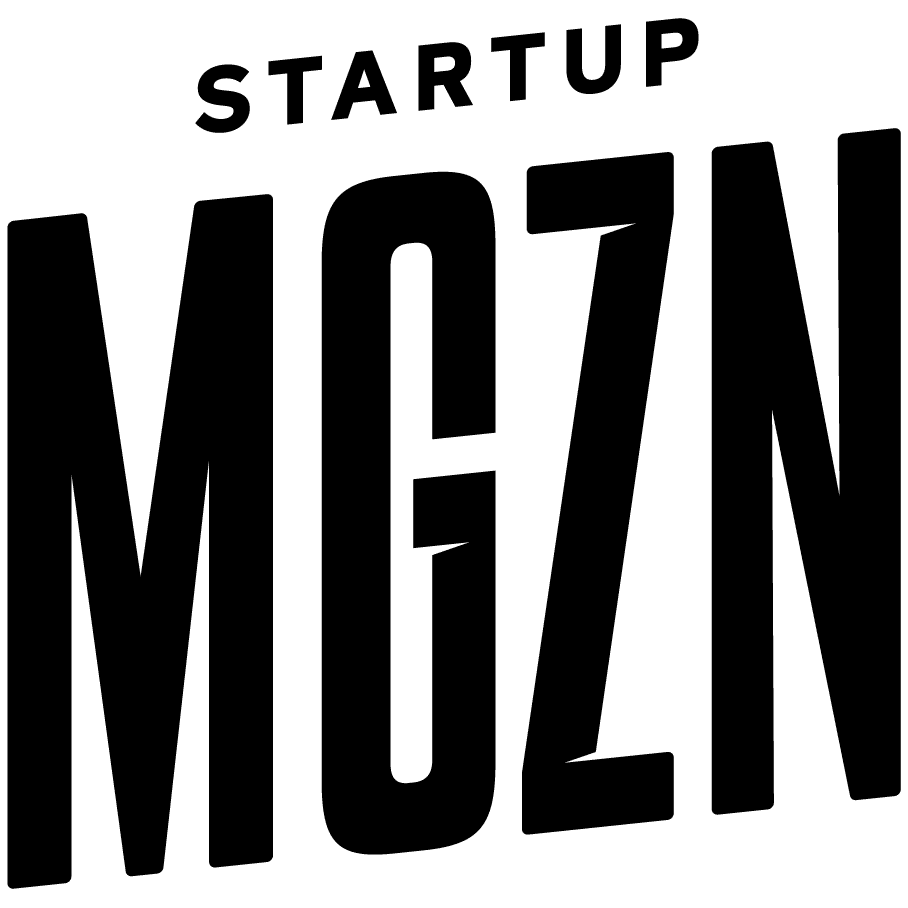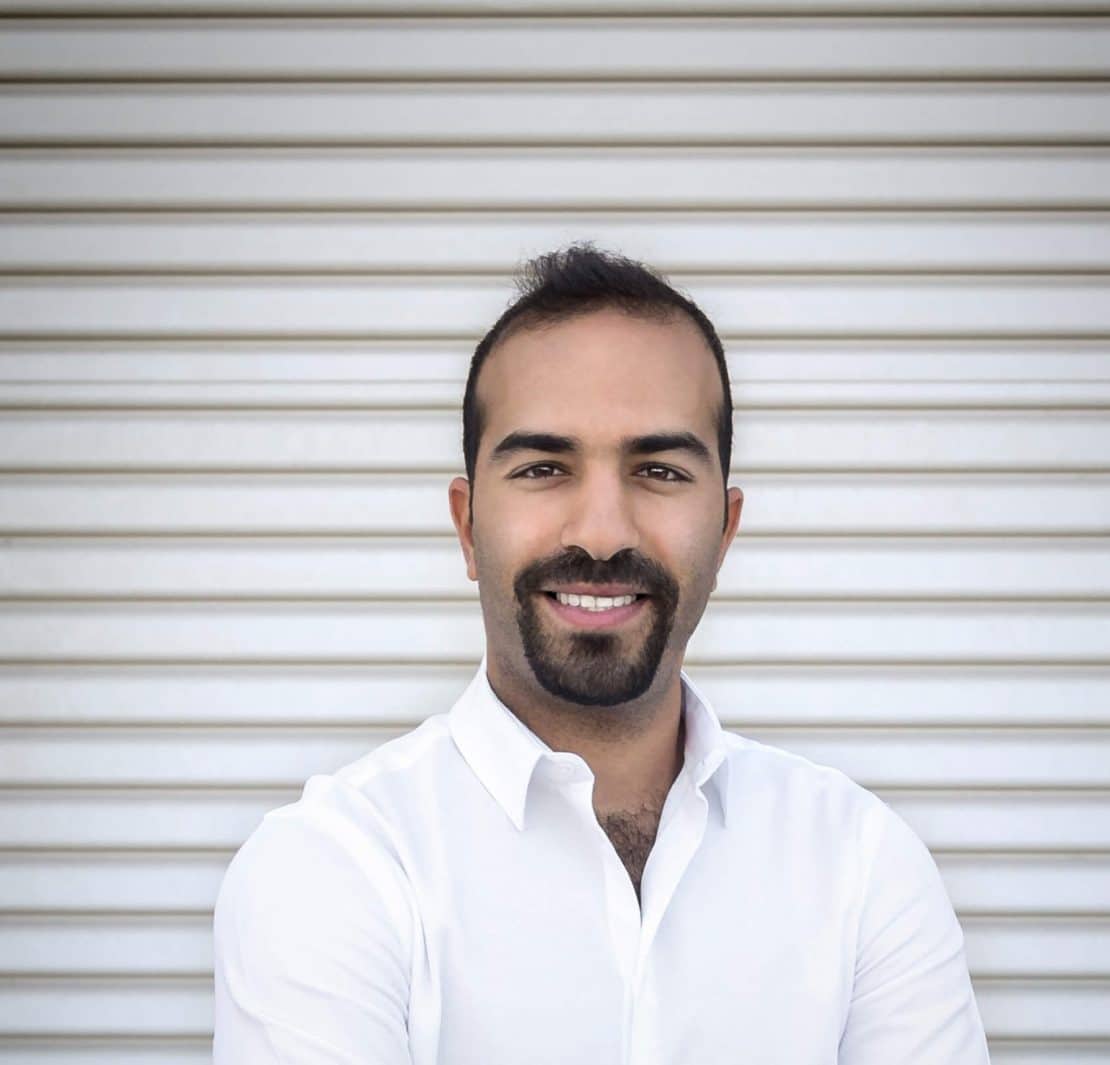Want to create the next breakthrough app? The possibilities are limitless. Eat founder Nezar Kadhem describes exactly how to do it…right down to the last detail.
Hello, Nezar. Could you please tell us how you started your journey?
Prior to January 2014, Eat was purely an idea. We were attending startup events and talking about it, but it hadn’t materialized yet. We hadn’t gone full speed. In February 2014, we had incorporated the company. We were on our way to doing this full-time.
That was the first round?
Tenmou had a very clear objective for us. They said, “Look, you need to reach product market fit.” At the time, we had pitched to them that Eat would solve problems for both restaurants and consumers. On the consumer side, it was a pain to a) discover restaurants, b) find the phone number of a restaurant, and c) take the time to call and have to repeat your last name over and over again. As we’ve seen elsewhere in the world, there is an easier way to do it: in three clicks.
Restaurants were still using outdated methods of pen and paper to manage their reservations and customers. Without a digital solution, restaurants couldn’t acquire users online, or have access to analytics on how they were performing. How many people dined at the restaurant? Who are the best customers? What are the trends? The digital solution was to solve these issues for restaurants.
By March 2014, Tenmou had injected USD $100k and we started full-time. We decided to focus on reaching product market fit for our table management system, our B2B solution. This was to be developed and installed at the restaurants—and we got to work. We spent about seven months building the solution in-house.
Initially, we got some traction. We were able to sign restaurants like Monsoon, Mirai, and the Gulf Hotel. We also pitched to The Four Seasons, and applied to their tender where we competed against the likes of Eat2Eat and OpenTable, and won. We went back to Tenmou, and said, “Guys, I think we’ve reached product market fit. Here’s the product, and here’s a signed contract by The Four Seasons, reviewed by a global committee. I think we’re onto something.”
Prominent investors decided to come in. By December, 2014, we had closed a second round of USD $300k to hire a team and launch full-steam in Bahrain. By February 2015, we released our consumer app, and very quickly started onboarding all of the other restaurants. By May, we had 70% of the restaurants in our desired portfolio using our B2B solution and app.
The next logical step was to go to Dubai—the mecca of F&B. All of the global 5-star hotel chains and celebrity chefs are there. We had to be there. So we raised another $500k and replicated our Bahrain operation there. Fast-forward to today, we have about 300 restaurants in our portfolio. About 200 in Dubai, 80 in Bahrain, and 20 globally.
“I STILL SEE EAT AS A STARTUP AT HEART, BECAUSE WE’RE STILL AT THAT AGILE STAGE WHERE WE COULD GO EITHER DIRECTION. WE HAVEN’T YET GROWN INTO A DEFINED MODEL. WE SEE A BRIGHT FUTURE. WE JUST HAVE TO KEEP WORKING AS HARD AS WE HAVE BEEN.”
We have to stay hungry. Hopefully, you’ll see some exciting stuff coming from us soon.
Is there one particularly brutal challenge you faced that still stands out in your mind?
I will absolutely never forget the first product we installed. We had just completed development of our reservation system, and started installing the solution at some serious restaurants. The moment you deploy and the restaurant staff starts using the product, if they don’t like it…. you’re screwed. If you download an app and it’s buggy, you delete it, right? That’s very common behavior with B2B. They have alternative solutions they can seek. At one point, we had to go through that consistently for about four weeks, every day.

Where do think money burns a hole the most? Marketing, salary, or growth?
“WHEN YOU’RE TRYING TO GET TO YOUR PRODUCT TO MARKET-FIT STAGE, YOU HAVE TO DEPLOY MOST OF YOUR CASH ON PRODUCT. YOU HAVE TO PIVOT IT TO FIND THAT SWEET SPOT WHERE PEOPLE ARE COMING TO THE APP, STICKING WITH IT, AND USING IT.”
We burned through all of our initial injection of 300K. Most of it went to product. Then we raised our 500K, and most of that went into sales, sales force, payment of commissions, and onboarding all of those restaurants.
Were the restaurants responsive? Or were they like, “Let’s try this out and see what happens”?
You always have those first movers, or early adopters. You have to really pinpoint who you want as an early adopter. It’s a very small number of users. Once you onboard them, you have your semi-early adopters, and that gap grows. Then you have your critical mass and your super-late followers. Each phase had different requirements. Our super-early adopters—they were the ones who saw the real value.
What are some of the newer problems you’ve encountered along the way?
Automating marketing for restaurants. Only two years post-launch, our restaurants have now built a massive database. Now the problem is, how do they manage it? Also, managing their own CRM within the restaurant—we had no idea that was going to be a problem. Then there’s reducing no-shows or cancellations. We’ve integrated Twilio into the app. You can send SMS confirmations and reminders.
Assuming you reach critical mass, is there something you could basically switch on that would just open up the cash floodgates?
Our model from early on remains the same today. We charge restaurants a fee per reservation. So, the more people we reach, the more transactions on the platform and the more revenue. Having said this, we are also trying new ways to increase our Take Rate. We are trying this in Dubai at the moment. We’re going to the upscale restaurants and asking them, “Are you willing to consider a percentage commission to Eat instead of a fixed fee?”
What has worked for you, marketing and traction-wise?
Creating a solid method of acquiring customers is very important. Because of our iPad app at the restaurants in both Bahrain and Dubai, we have been able to build a sizeable database of nearly half a million users. Combine these users, upload them to Facebook, and you can create a lookalike audience which allows you to market to your perfect audience.
How important do you think data science is for your startup—and other startups?
If it weren’t for data science, we would have not been able to close our recent round of funding. Why? Because, the moment you talk to the more mature investors, they say things like, “How much does it cost you to acquire a customer? What is the conversion rate between your install to your signup, and your signup to your customer to an actual transaction?”
Everything—defining a target, testing creatives, etc.—gets you a CPI (cost per install) number. The lower that is, the better. This is through targeting and defined lookalike audiences. If that customer downloads the app and doesn’t transact, you’ve paid for that download. Then you start asking questions like, “Is my product solving a problem? Is my tech actually working?” If you can’t achieve numbers, then you can’t raise money. You can’t grow your business. Data science helps achieve that, so it’s really important.
If you were to start all over again today, who would be your top first three hires, in order of importance?
If I had to pick the top three, the first would be a jack-of-all-trades co-founder. You need someone to help you stay sane, to delegate major tasks to. I didn’t have one for the longest time, and he recently joined us in February this year. It changed my life.
How did you find him?
He was the co-founder of another company next door to us, and they couldn’t raise enough money, so they decided to close up shop. He literally came from next door, picked up his chair and joined us. That was really easy. Number two would very likely be your scientist: your CTO, your product guy. Number three would be the person who can help you prove the business development side of the business: a rock-star salesperson or marketing person. Because you need your numbers to grow, right?
Fill in the blanks. Startups should not cut corners on…?
Product. If you’re a first mover, it might seem okay to cut corners on product, but I’m just going to say don’t do it. It puts you in a risky position for a competitor to come in and create a better product.
Name one myth about your app project that you can dispel right now.
It’s a myth that eat has an unproven business model. I can tell you for a fact that Open Table—and you can see this publicly—is worth $2.6 billion. It has been acquired by Priceline, and has an identical business model to ours. As long as we keep growing and secure new funding, we will be able to get there.
What is something that you can share exclusively with us about the future of the Eat app?
We’ve decided to launch a very cool feature called Collections. Each category would be initiated by a credible foodie. It’s like Spotify—you can create your own playlists and publish them publicly.
This was perfect. Thank you for this opportunity.
Thank you.

